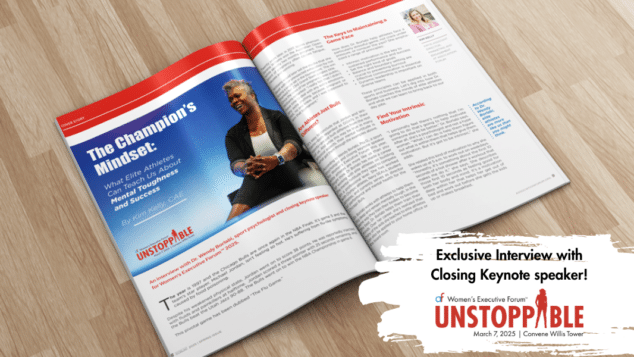Paid Leave and Associations: Here’s What You Need to Know

One goal of any company, associations included, is to maintain a staff of content, talented employees. To reach that goal, attracting the best candidates and retaining current prized employees is imperative — and easier said than done in the current atmosphere of frequent turnover and staffing shortages. Although providing competitive salaries can be a challenge for many associations, offering more robust benefits can help maintain an edge. A key piece to include? Paid leave.
“Paid leave is definitely a trending benefit offering,” says Katie Brennan, SHRM-CP, a knowledge advisor with the Society for Human Resource Management (SHRM).
Paid leave includes any time an employee is not on the clock but is still being paid, such as paid time off (PTO), vacation time, sick days, bereavement, or maternity or paternity leave — now commonly referred to as family leave.
Making countless headlines, U.S. leaders have been pushing for national standards for paid sick or family leave. The Build Back Better Plan would ensure four weeks of paid family leave after the birth or adoption of a child or to care for an ill loved one. Beginning in October 2020, federal employees — both moms and dads — were entitled to up to 12 weeks of paid time off for the birth, adoption or foster of a new child. In 2022, federal employee benefits will extend to include two weeks of paid bereavement.
Large corporations are offering robust plans, with extended paid family leave for mothers and fathers. For example, Netflix offers moms and dads paid family leave for up to the first year after a child’s birth or adoption. Provided work obligations are met, some companies are even beginning to offer unlimited paid time off. “Facebook, Google, they’ve started doing these longer paid leaves, and in an effort to track with them, organizations, no matter their size, no matter their industry, the best-places-to-work type organizations, the ones that have a real focus on talent, have tried to extend their paid leave as well,” Jaime Klein, founder and CEO of Inspire HR, told the Harvard Business Review.
Nearly half of private-sector employers in the U.S. are offering paid leave. According to online recruiter Zippia’s 2021 statistics, 40% of employers offer some type of paid maternity leave, but only 16% of those working in private industries have access to paid maternity leave.
“There’s definitely a spectrum in the amount of time off that’s offered,” Brennan says. “I’ve seen companies offering several weeks, or even months. Other employers may offer paid leave for four weeks and the other weeks are unpaid.”
Associations, which may not have the same deep pockets as other organizations, can take a closer look at their benefits offerings to see if there are other ways to attract employees, says Brennan.
“In my experience with nonprofits, the organizations that are not able to offer competitive salaries can often compete with benefits, and paid leave is certainly one of those,” Brennan says.
A Legal View
The U.S. is one of the only industrialized countries without a federal paid leave plan. The Family and Medical Leave Act (FMLA) provides some employees with “up to 12 weeks of unpaid, job-protected leave per year” and requires that health benefits remain intact during the leave. This rule applies to all full-time workers who have worked at least 1,250 hours for their employer prior to taking leave. Employers covered by FMLA are “any person engaged in commerce or in any industry or activity affecting commerce, who employs 50 or more employees for each working day during each of 20 or more calendar workweeks in the current or preceding calendar year,” as spelled out by the U.S. Department of Labor.
Some states have enacted legislation ensuring more paid leave protections. At the time of this writing, 10 states (California, Colorado, Connecticut, Massachusetts, New Jersey, New York, Oregon, Rhode Island, Washington and Hawaii) and Washington D.C. offer some type of paid leave protections in addition to FMLA, according to AEI-Brookings.
Mutual Gains
Overall, Americans agree on the concept that employees should receive paid leave. Various groups have been advocating for it for more than a century. The concept has broad public support, with 82% in favor of paid maternity leave, 69% for paid paternity leave, 67% for paid family care leave and 85% for paid leave to deal with one’s own serious health condition, according to a 2017 Pew Research Report. Most of the respondents agreed that employers should fit the bill for paid time off.
The sticking point is whether it should be federally mandated. The “public is sharply divided over whether the government should require employers to provide this benefit or let employers decide for themselves, and relatively few see expanding paid leave as a top policy priority,” the report states.
With a consensus on paid leave’s importance, it’s no shock that offering generous paid leave options can attract candidates and maintain content employees.
“Statistics also show that paid parental leave benefits will improve a mother’s likelihood of returning to work after the birth of her baby,” Brennan says, referring to a study conducted by the nonprofit Institute for Women’s Policy Research. It showed that, for states with an implemented paid leave policy, there was a 20% reduction in the number of female employees leaving their jobs in the first year after giving birth — and up to a 50% reduction after five years. “We find that in the absence of paid leave, maternal labor market detachment is nearly 30% following a birth; it attenuates over time but remains significantly different from zero as much as eleven years later,” the authors conveyed in the abstract.
This is especially noteworthy, as more than 275,000 women left the workforce in January 2021, according to an analysis by the National Women’s Law Center.
Factor in the expense of turnover, and paid benefits may not carry the anticipated sticker shock.
Examining Your Policies
Implementing heartier paid leave policies aren’t without hurdles.
“Cost is the biggest challenge, and it’s also going to depend on demographics,” Brennan says. “If an employer has a younger staff demographic who will be having children, family leave can be costly.”
There is also the challenge of managing the workload in the absence of that employee as it can put a strain on other staff members and the day-to-day business operations.
Brennan says that, at a minimum, employees are expecting to be granted some time off even if it is not paid.
Along with adhering to federal and state laws, employers need to consider what makes the most sense for their employees. If employees are primarily in their 40s or 50s, a beefed-up family plan may not make a big difference in retention rates.
“Employers want to offer what their employees find desirable,” Brennan says. “Engaging them through some sort of survey can be worthwhile.”
She also suggests that associations conduct some type of benchmarking with competitors to see what else is being offered. “If competitors are offering certain benefits, they should want to, too.”
A Perk for Tomorrow
Employee turnover rates are already high and expected to continue climbing. A study from Nonprofit HR revealed that 45% of responding nonprofit employees will seek new or different employment in the next five years. Of that group, 23% said that nonprofits would not be among the types of organizations they intend to pursue.
With these conditions, the time to explore paid leave opportunities is now. Offering more extensive — or at least some — paid leave benefits can help associations be the ones to attract future job seekers and achieve a healthy association workforce.
Tags
Related Articles
Refill Your Cup: Summer Wellness Tips for Busy Professionals
Discover simple, effective ways to recharge this summer so you can show up as your...
The Champion’s Mindset: What Elite Athletes Can Teach Us About Mental Toughness and Success
An interview with Dr. Wendy Borlabi, sport psychologist and closing keynote speaker for Women’s Executive...
Great Bosses, Greater Impact: Leadership Lessons that Stick
The best bosses leave more than instructions—they leave echoes of confidence, creativity, and leadership that...




